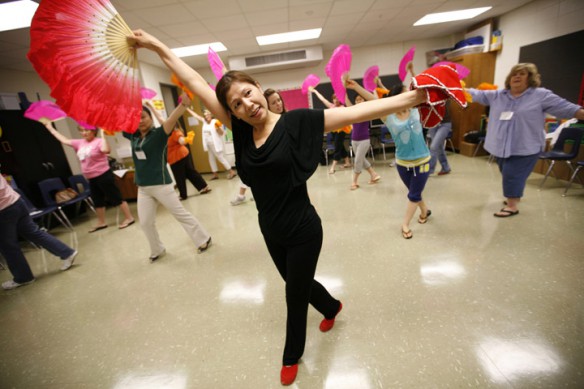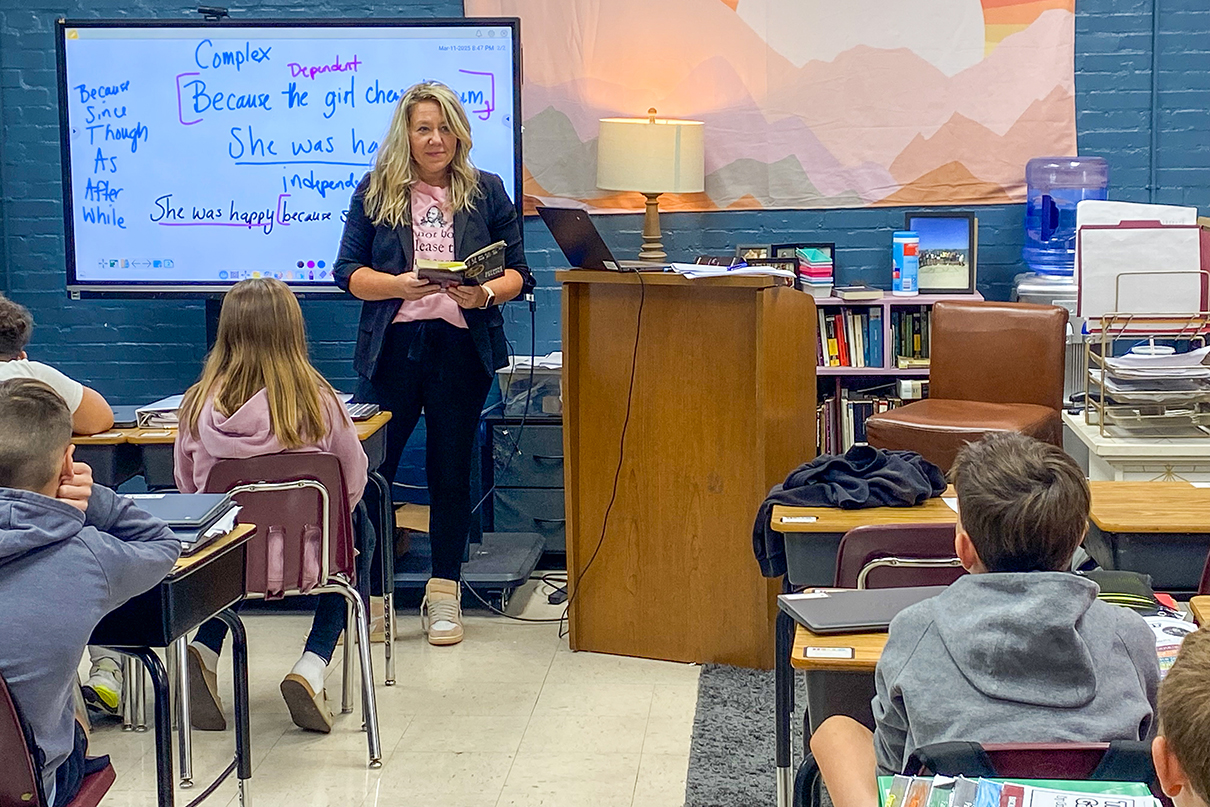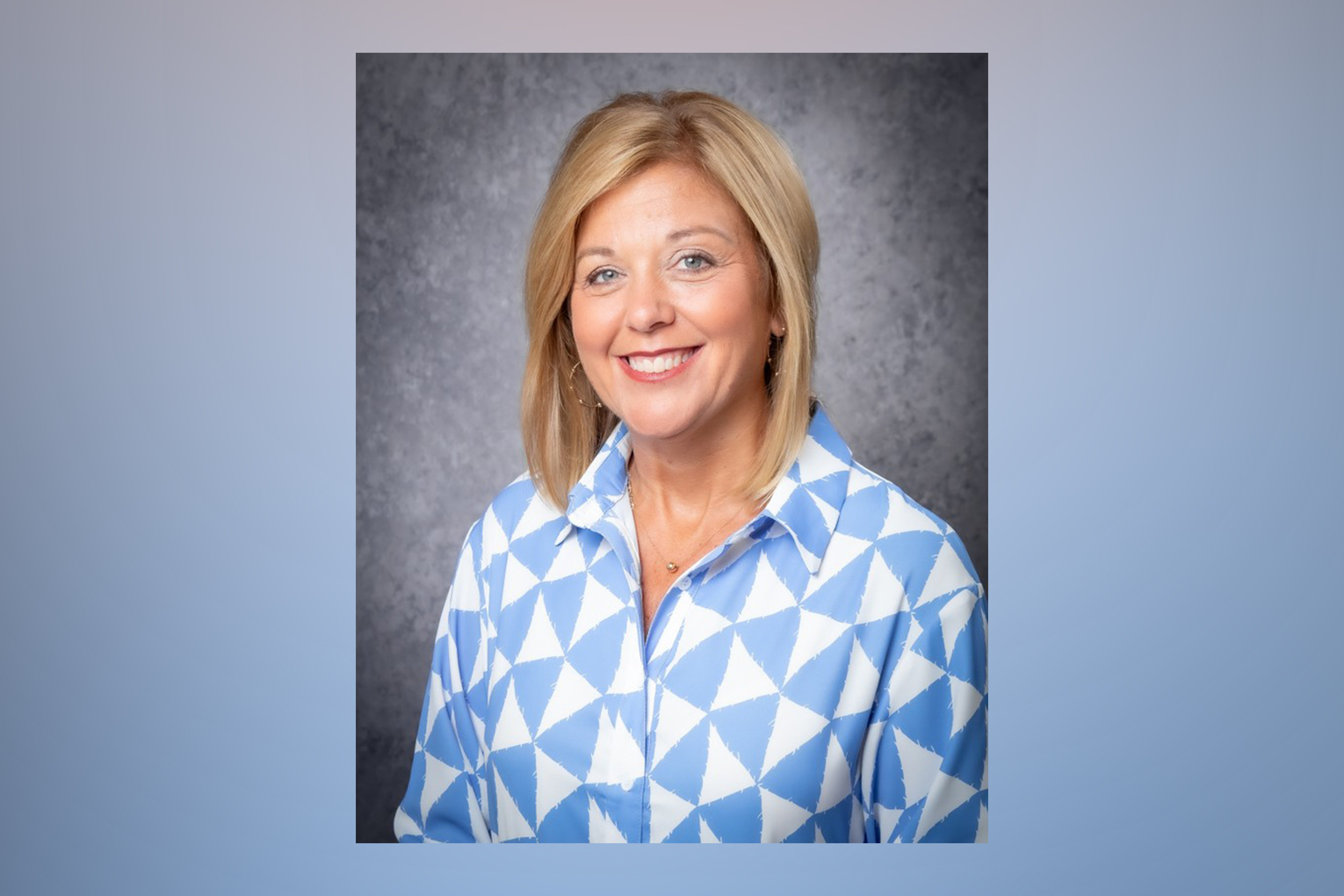
Chinese dance instructor Shuling Fister leads a classroom of teachers in the Chinese Yangge Dance during the Next Generation Academy at Bowen Elementary School (Jefferson County). Photo by Amy Wallot, June 22, 2011
By Matthew Tungate
Ten students watched Brent del Bianco play the flamenco guitar and Hong Shao play the pipa, a pear-shaped, four-string instrument, at Bowen Elementary School (Jefferson County) last week. But this summer school lesson was really for the 40 or so teachers attending the Next Generation Academy: Integrating World Languages and the Arts who were looking on.
Shao strummed and plucked furiously with her right hand as her left hand raced back and forth across the frets. The audience could hear the similarity to a guitar.
“This is dancing music,” Shao said.
Del Bianco noted that Shao’s strumming technique is similar to one used to play flamenco music.
Del Bianco asked if students could see a difference in the instruments. One student said the guitar has a hole and the pipa doesn’t. Shao invited the student to take a closer look – where she discovered the instrument’s bridge covers a hole.
Students also noted that guitars are played horizontally while the pipa is played vertically.
Shao said the pipa was played horizontally when it was invented 2,000 years ago, but over the years the tradition has changed to play the instrument upright.
One of the teachers asked Shao why she taped the fingernails on her right hand. She said she does so because her nails are soft and would break without taping them. Del Bianco smiled knowingly and said he sometimes tapes his right-hand fingers, too, for the same reason.
Jeffrey Jamner, director of School Programs for the Kentucky Center for the Performing Arts in Louisville and coordinator of the center’s Summer Arts Academies for teachers, told the accumulated group that the guitar and pipa have a common ancestor: the oud. During the middle ages, a trade route grew between Europe and the Far East. The travelers took the oud, which was developed in Central Asia, in each direction. It became the guitar in the West and the pipa in the East, Jamner said.
For the last 10 years, the Kentucky Department of Education (KDE) and the Kentucky Center for the Performing Arts have held weeklong Summer Arts Academies for teachers to receive training in several art forms: music and dance, and visual arts and drama. This year, two Next Generation Academies have been added: one for integrating social studies and the arts, and another for integrating world languages with the arts.
About 40 elementary school teachers signed up to learn how to integrate arts lessons with Chinese or Spanish language. Most of the teachers came in teams – a world language teacher and an arts teacher, Jamner said. Two-thirds of the teachers came for the Spanish, the other third for Chinese, he said.
“So when we’re talking about music and melody and tempo, there are words for that in Spanish and Chinese to help the language teachers to understand the principles and elements of the art forms, and to help the arts teachers understand correct usage and pronunciation of some words that they’re learning in the language classes,” he said.
For example, if the arts teacher is teaching a Chinese dance using an eight count, and the students are learning to count in Chinese in language class, instead of starting “five, six, seven, eight,” they could count off in Chinese, he said.
By the end of the week, the Spanish group taught – in Spanish – the Chinese group how to dance the beginning of a flamenco dance. The Chinese group taught – in Chinese – the Spanish group how to dance the beginning of the Tai Chi Fan Dance.
Just as the guitar and pipa have things in common, the teachers found that world language and the arts have similarities as well.
Arts and world language teachers have always taught about cultures, Jamner said.
“That they already have in common,” he said. “We’re just taking them further.”

Jeffersontown Elementary School (Jefferson County) teacher Pedro Toledo and Fairdale Elementary School (Jefferson County) teacher Mariano Polo learn to flamenco during the Next Generation Academy at Bowen Elementary School (Jefferson County). Both are Spanish teachers at their schools.
Photo by Amy Wallot, June 22, 2011
Jacque Van Houten, world language and international education consultant for the Department of Education, said both the arts and world language are performance areas.
“This is a way to integrate content across those programs,” she said. “And it shows them in these two contents, but it also shows them how to integrate other contents, so that they may be supporting math and science and language arts in their areas.”
KDE arts consultant Robert Duncan agreed, saying that showing students examples of dances through video and then having them discuss the dances in the target language would be good practice.
“But then to actually have them learn to do the dance and take what they’ve learned and make their own dances, make their own artworks, make their own music … that’s what they need to be working toward,” he said.
Van Houten said the teachers faced the same challenges as their students, especially those for whom English is a second language.
“They’re really understanding, they’re emulating and sympathizing with their ESL students what it’s like to be in their arts classes and not understand that language,” she said.
Duncan said he challenged the teachers to work with their administrators to find time for collaboration once they’re back at school.
“This isn’t just a really good week of professional development and then in August or September they go back to doing things the status quo,” he said.
Making time to work together is not always easy, Jamner said.
“We don’t expect the arts teachers to teach equally to both, and we don’t expect the language teachers to teach equally to both, but we would like for them to feel increased confidence to support each other’s work, to see where the curricula overlap and to intentionally align what they’re doing,” he said.
Alfonso de Torres, who has taught Spanish for two years at Martin Luther King Jr. Elementary School (Christian County), said he didn’t have a curriculum when he arrived at the school. Because he got 20 minutes per day in each class to teach Spanish, he designed his lessons based on Kentucky’s core content.
For instance, he would teach students numbers in Spanish if they were learning about fractions, he said.
“So I was becoming useful for the teachers,” de Torres said. “Most of the teachers told me that the kids were always saying, ‘Oh yeah, I remember this from Spanish.’ I tried to be useful because the teachers were needing that.”
He said he attended the academy to learn as much as he can to bring professional development to the art and music teachers in his school and other schools in his district.
“I want the language to be a vehicle for the knowledge they need to learn,” de Torres said.
MORE INFO …
Jeffrey Jamner, jjamner@kentuckycenter.org, (502) 562-0703









What a wonderful project. If we understood more about art, languages, and cultures, not only worldwide, but our near neighbors, the fear mongerers would not find us such easy prey.